Festo CTEU-AS Handleiding
Festo
Niet gecategoriseerd
CTEU-AS
Bekijk gratis de handleiding van Festo CTEU-AS (3 pagina’s), behorend tot de categorie Niet gecategoriseerd. Deze gids werd als nuttig beoordeeld door 3 mensen en kreeg gemiddeld 4.5 sterren uit 2 reviews. Heb je een vraag over Festo CTEU-AS of wil je andere gebruikers van dit product iets vragen? Stel een vraag
Pagina 1/3

Bus node
CTEU-AS
Festo SE & Co. KG
Ruiter Straße 82
73734 Esslingen
Germany
+49 711 347-0
www.festo.com
Description
Installation and interfaces
Translation of the original instructions
8101686
2018-11a
[8101688]
Bus node CTEU-AS English. . . . . . . . . . . . . . . . . . . . . . . . . . . . . . . . . . . . . . . . . . . . .
For all available product documentation è www.festo.com/pk
1 Instructions on this description
This description includes information for mounting the bus node on an I-port-com
patible device from Festo (e.g. valve terminal with I-port interface) and for installa
tion of this combination in a higher-level control system.
AS-Interface
®
and TORX
®
are registered trademarks of the respective
trademark owners in certain countries.
2 Intended use
The bus node type CTEU-AS has been designed exclusively for use as a slave on
the AS-interface fieldbus. It may only be used in its original status without unau
thorised modifications and only in perfect technical condition.
The bus node is intended for use in an industrial environment. Outside of industrial
environments, e.g. in commercial and mixed-residential areas, actions to suppress
interference may have to be taken.
3 Target group
The target group for this description consists of trained specialists in control and
automation technology who have experience with installation of stations on the
AS-interface fieldbus.
4 Mounting
Warning
Danger of injury to people, damage to the machine and system resulting from
uncontrolled movements of the actuators and undefined switching states
Switch off the operating and load voltage supplies.
Switch off compressed air supply.
Exhaust the pneumatics valve terminal.
Note
Damage to the electronics
The bus node includes electrostatically sensitive devices.
Do not touch any electrical/electronic components.
Observe the handling specifications for electrostatically sensitive devices.
Note
Use cover caps to seal unused connections. You will then achieve degree of pro
tection IP65/IP67.
Information on mounting the bus node on the decentralised electrical
connecting plate CAPC-... can be found in the mounting instructions that
accompany the connecting plate.
The bus node CTEU-AS supports only the X1 connection of the electrical
connecting plate CAPC-.... The X2 connection on the electrical connecting
plate CAPC-... is without a function for the CTEU-AS bus node.
For mounting the bus node on a valve terminal with I-Port interface, proceed as
follows:
1. Inspect the seals and sealing surfaces on bus node and valve terminal.
2. Plug the bus node onto the valve terminal in the right position and without tilt
ing.
3. Screw the three self-tapping screws in by hand. You can use the threads already
present when you screw it in again.
4. Tighten the screws by hand in diagonally opposite sequence, with a tightening
torque of 0.7 ± 0.1 Nm.
5 Connection and display components
The following electrical connection and display components can be found on the
bus node:
1
3
4
2
1DIL switch group (è chap. 7.2)
2Status LEDs (status display/
diagnostics è chap. 8)
3M12 plug for AS-interface bus and
additional power supply (AS-i In)
(è chap. 6)
4M12 socket, AS-interface bus and
additional power supply (AS-i Out)
(è chap. 6 )
Fig. 1
6 Connect AS-interface bus and auxiliary power supply
The bus node also supplies voltage to equipment connected via the I-port inter
face.
Warning
Danger of electric shock
Only use PELV circuits in accordance with IEC/EN 60204-1 (protective extra-
low voltage, PELV) for the electrical power supply.
Observe also the general requirements for PELV power circuits in accordance
with IEC/EN 60204-1.
Only use voltage sources which guarantee reliable electrical isolation of the
operating voltage in accordance with IEC/EN 60204-1.
Through the use of PELV circuits, protection against electric shock (protection
against direct and indirect contact) is ensured in accordance with IEC/EN 60204-1.
Observe with branch lines:
– the maximum overall length of the AS-interface bus (100 m without repeater/
extender)
– the line length of the load voltage connection cable (depends on the current
consumption of the valve terminal and fluctuations in load voltage).
M12 plug, AS-interface In Pin Allocation
1
3
2
4
1 AS-interface +
2 0 V (auxiliary power supply)
3 AS-interface –
4 24 V (auxiliary power supply)
Fig. 2

M12 socket, AS-interface Out Pin Allocation
4
23
1
1 AS-interface +
2 0 V (auxiliary power supply)
3 AS-interface –
4 24 V (auxiliary power supply)
Fig. 3
Note
Electromagnetic interference
Make the connection to functional earth via the connected device or the elec
trical connecting plate CAPC-....
Functional test:
– The LED “PS” is illuminated green when the power supply is correctly presented.
– The LED “X1” is lit green if a device is connected and the I-Port communication is
ready to function (è chap. 8).
7 Basic settings for fieldbus communication
7.1 Removal of the DIL switch cover
To set the DIL switches, the cover must be removed:
1. Switch off the power supply.
2. Unscrew the two mounting screws of the transparent cover and remove the
cover.
7.2 Setting the DIL switches
The bus node has a DIL switch group with 2 DIL switches. Set the valve configura
tion with DIL switches 1 and 2.
1
1DIL switches 1 and 2
Fig. 4
I/O configuration,
AS-interface slaves
Valve configuration DIL
switches
1 2
8I/8O – The first 8 solenoid coils are actuated.
– The number of valves is not checked.
– The profile for both AS-interface slaves is 7.A.7
(factory setting).
OFF OFF
16 I/16 O – The first 16 solenoid coils are actuated.
– The number of valves is not checked.
– The profile for both AS-interface slaves is 7.A.A.
ON OFF
4 I/4 O – The first 4 solenoid coils are actuated.
– The number of valves is not checked.
– The profile of the AS-interface slave is 7.F.E.
(standard slave).
OFF ON
–Reserved ON ON
Fig. 5
7.3 Mounting of the DIL switch cover
1. Place the cover carefully on the bus node. Make sure that the seal is seated
correctly!
2. Tighten the mounting screws with max. 0.4 Nm with a Torx screwdriver
(size T10) or a slot screwdriver that fits.
7.4 Address allocation
Before connecting to the AS-Interface bus: Assign a free address to the slave.
Addressing can be performed via an AS-interface addressing device in accordance
C.S.2.1, an addressing cable and through an AS-interface master.
The number of connected solenoid coils is set through the DIL switches
(è chap. 7.2). Depending on this setting, the number of slave addresses, IO and
ID code are automatically configured and saved (è subsequent table).
Number of
solenoid coils
Slave
address
Profile 1 Profile 2 AS-interface-
master type
1 … 4 1 Standard S-7.F.E – M1 … M4
1 … 8 1 Extended A+B S-7.A.7 S-7.A.7 M4
1 … 16 1 Extended A+B S-7.A.A S-7.A.A M4
Fig. 6
Assignment of slave addresses to physical outputs/valves of the connec
ted devices can be found in the respective product documentation.
8 Status display/diagnostics
8.1 Status display via LEDs
PS (power system) – X1 (I-port)
LED indicator Status and significance
PS X1
Both LEDs light green:
– additional voltage present
LED “PS” lights green, LED “X1” flashes green
– additional voltage present
– short circuit at a solenoid coil or other diagnosis of the I-port device
(peripheral area)
Both LEDs flash green:
– additional voltage missing
LED “PS” lights green, LED “X1” flashes red:
– additional voltage present
– no I-port device detected
– peripheral faults
LED “PS” illuminated green, LED “X1” illuminated red:
– additional voltage present
– short circuit/overload behind the AS-interface coil
– peripheral error, I-port connection interrupted
Fig. 7
AS-i (AS-interface)
LED
indicator
Status and significance
LED illuminated green:
– AS-interface voltage applied
– no error is present.
LED is off:
– AS-Interface voltage not applied
LED illuminated red:
– AS-interface address not set (equals 0)
– no communication
LED flashes red/green:
– peripheral fault (e.g. no additional voltage, no I-port)
Fig. 8
Note
AS-interface has an integrated watchdog function, which can be activated/deac
tivated via the parameter bit P0.
Valid is:
– P0 = 1 è Watchdog activated (delivery status)
– P0 = 0 è Watchdog deactivated
If Watchdog is activated, the outputs are reset as soon as bus communication
malfunctions.
8.2 Error diagnostics via AS-interface bus
AS-interface
parameter-entry bits
Faults
P3 P2 P1 P0
– 1 1 0 short circuit/overload behind the AS-interface coil
– 1 0 1 no additional voltage
– 0 1 1 no I-port device found
– 1 0 0 short circuit at a solenoid coil
Fig. 9

9 Technical data
General
Degree of protection through housing
(in accordance with EN 60529)
IP65/67
1)
2)
AS-interface specification 3.0
Protection against electric shock
(Protection against direct and indirect contact in
accordance with IEC/DIN 60204-1)
Through use of PELV circuits
Electromagnetic compatibility (EMC)
3)
– emitted interference
– resistance to interference
See declaration of conformity
è www.festo.com
Vibration and shock
(as per EN 60068)
Severity level (SL)
4)
for mounting on
– vibration (part 2 – 6) Wall: SG 2, H-rail: SG 1
– shock (part 2 – 27) Wall: SG 2, H-rail: SG 1
– continuous shock (part 2 – 29) Wall and H-rail: SG 1
Temperature range
– storage/transpor t –20 … +70 °C
2)
– environment, operation –5 … +50 °C
2)
Materials PA (reinforced), PC, NBR, steel (galvanized),
RoHS-compliant circuit boards
1) Requirement: Bus node mounted completely, plug connector in the plugged-in status or provided with
cover cap.
2) Note that connected devices may only satisfy a lower degree of protection, a smaller temperature
range, etc.
3) The bus node is intended for use in an industrial environment. Outside of industrial environments,
e.g. in commercial and mixed-residential areas, actions to suppress interference may have to be taken.
4) Explanation of the severity level è subsequent tables
Fig. 10
Vibration load
Frequency range [Hz] Acceleration [m/s
2
] Deflection [mm]
Severity
level 1
SL2 SL1 SL2 SL1 SL2
2 … 8 2 … 8 – – ±3.5 ±7
8 … 27 8 … 27 10 10 – –
27 … 58 27 … 60 – – ±0.15 ±0.75
58 … 160 60 … 160 20 50 – –
160 … 200 160 … 200 10 10 – –
Fig. 11
Shock load
Acceleration [m/s
2
] Duration [ms] Shocks per direction
SL1 SL2 SL1 SL2 SL1 SL2
±150 ±300 11 11 5 5
Fig. 12
Continuous shock load
Acceleration [m/s
2
] Duration [ms] Shocks per direction
±150 6 1000
Fig. 13
Power supply
AS-interface bus connection
– voltage range (protected against incorrect
polarity)
26.5 … 31.6 V DC
– residual ripple š20 mVpp
AS-interface auxiliary power supply
– voltage range (protected against incorrect
polarity)
24 V DC _10%
– residual ripple 4 mVpp
Intrinsic current consumption
– bus node electronics Max. 30 mA
– bus node on device (e.g. valve terminal) Max. 60 mA
– bus node on electrical connecting plate
CAPC-...
Max. 30 mA
Load current for the AS-interface slave Max. 700 mA
(A load of max. 700 mA can be connected to
the “AS-interface Out” socket.)
Fig. 14
Technical data of the connected equipment can be found in the respective
product documentation.
Product specificaties
| Merk: | Festo |
| Categorie: | Niet gecategoriseerd |
| Model: | CTEU-AS |
Heb je hulp nodig?
Als je hulp nodig hebt met Festo CTEU-AS stel dan hieronder een vraag en andere gebruikers zullen je antwoorden
Handleiding Niet gecategoriseerd Festo

2 Augustus 2025
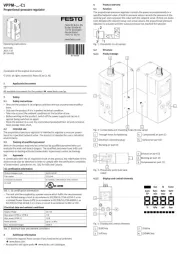
2 Augustus 2025
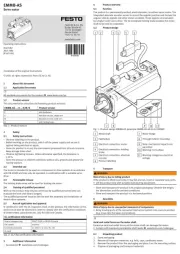
1 Augustus 2025
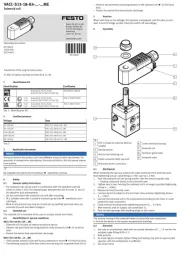
1 Augustus 2025
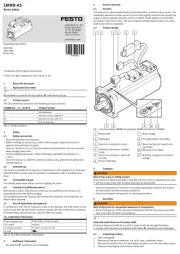
1 Augustus 2025
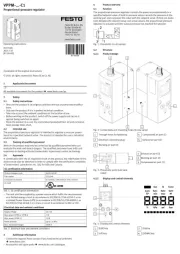
1 Augustus 2025
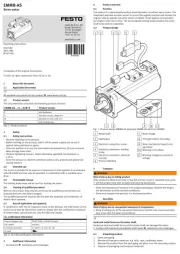
1 Augustus 2025
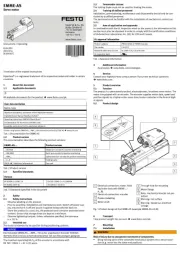
1 Augustus 2025
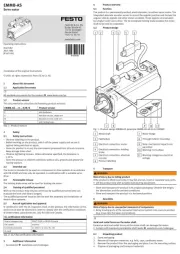
1 Augustus 2025
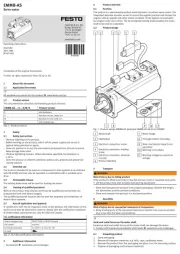
1 Augustus 2025
Handleiding Niet gecategoriseerd
- Sachtler
- Trident
- Crucial
- Dahle
- Lumag
- Bebe Confort
- Doffler
- KEMIMOTO
- Spectra Cine
- Siedle
- Enermax
- Durex
- Cool Maker
- Continental
- Momini
Nieuwste handleidingen voor Niet gecategoriseerd
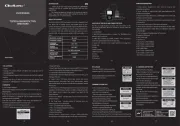
13 September 2025
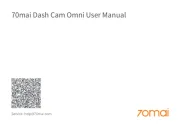
13 September 2025

13 September 2025
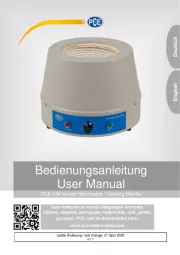
13 September 2025

13 September 2025
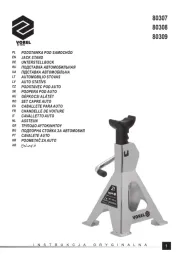
13 September 2025
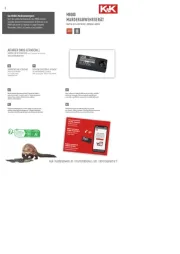
13 September 2025
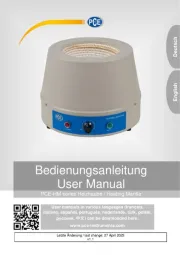
13 September 2025

13 September 2025
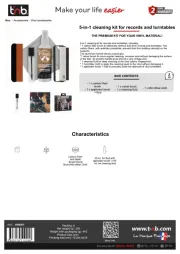
13 September 2025